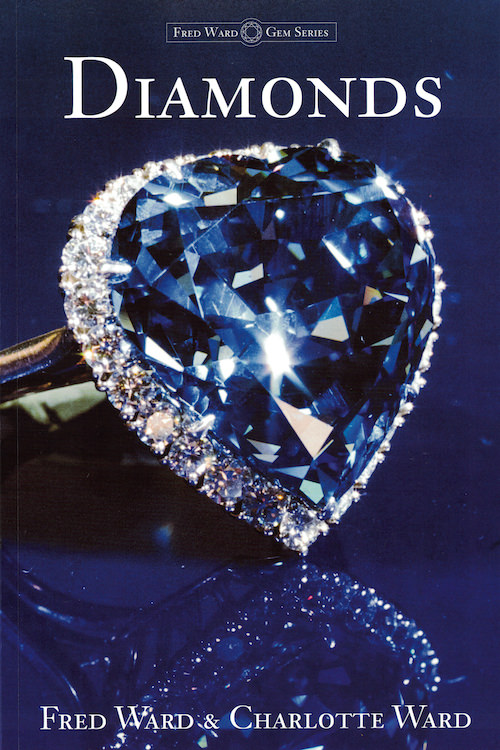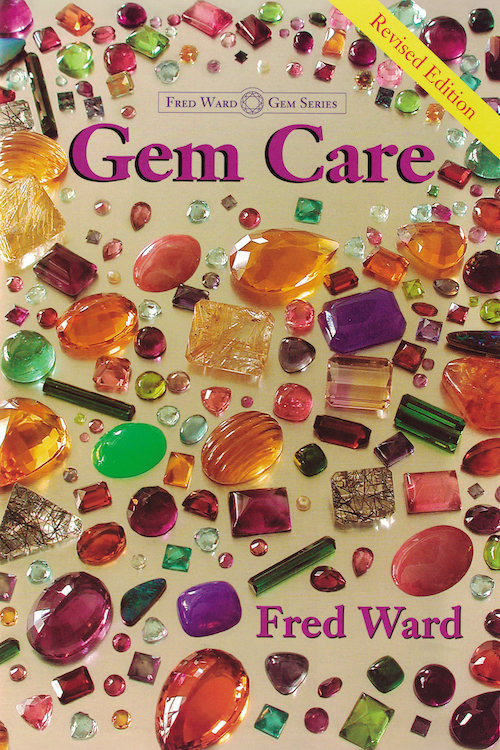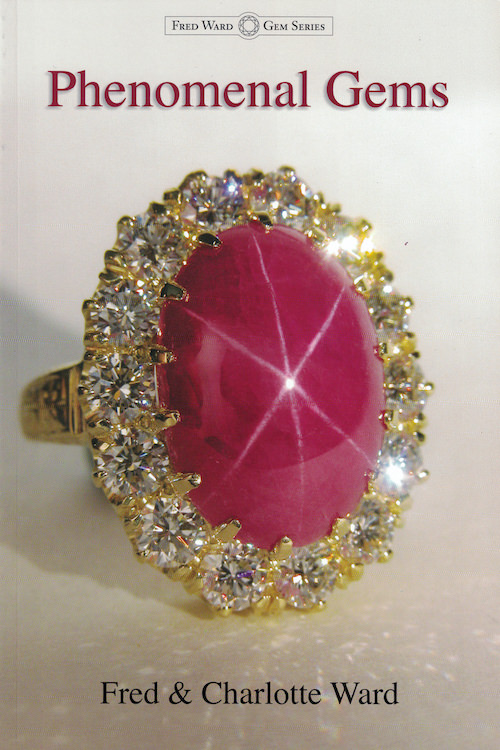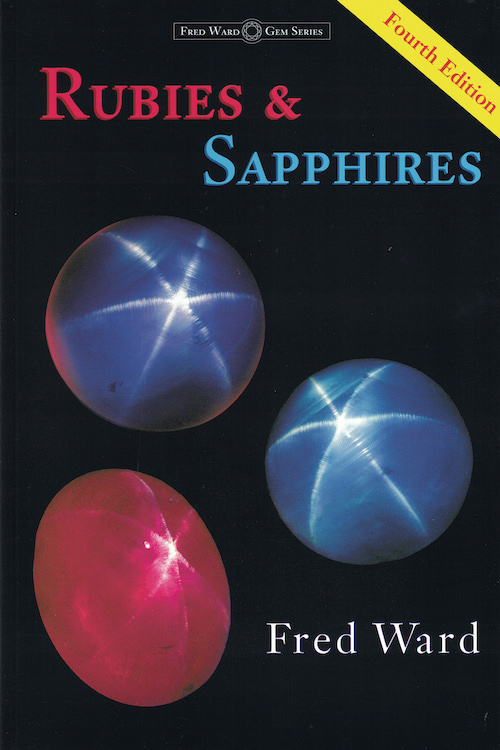Emeralds
Emeralds are the premier gems in the beryl family. For more than 4,000 years, emeralds have been among the most valuable of all jewels. In one of the rare cases where lore and fact coincide, emerald history really does begin in Egypt, where there actually was a “Cleopatra’s Mine.” Mining in the desert southeast of Cairo (now near the Aswan Dam) began before 2000 B.C. and continued until about 1200 A.D. Although emeralds were extracted for two thousand years before Cleopatra was born, her use and love of the gems led to her name being attached to the mine, an association that remains. Egypt supplied the known world with emeralds throughout the Biblical period and through the Middle Ages. But most of the stones, as you see in numerous examples in Fred Ward and Charlotte Ward’s book on emeralds, would barely be classified as gems today. The world had to wait until Spain conquered the New World and found South American natives with great emeralds to see how fine the green gemstones could be.
Those fabulous New World emerald crystals came from what is now Colombia. It took Spain five decades to overpower the Muzo Indians who occupied the mining area. Once the gems arrived in Europe, monarchs and the gem-loving royalty in India, Turkey, and Persia sought the great green treasures. The new emerald owners produced spectacular artifacts between 1600 and 1900, such as Turkey’s incredible gem-laden Topkapi Dagger and the beautifully delicate Atocha Cross. The Spanish Colonial specimen was fabricated in Colombia and lost underwater during a hurricane in the Florida Straits for more than two centuries.
Today Colombia, Brazil, and Zambia mine most commercial emeralds. Several other countries, such as Pakistan and Zimbabwe, produce smaller amounts. Although Brazil mines more emeralds annually than any other country, Colombia dominates the trade by setting the standards for size, color, and price. It is Colombian emeralds against which all others are judged. Rarer and sometimes more expensive than a similar-sized diamond, Colombian emeralds have a unique look, a green lightly touched with blue. Muzo, the original mine, remains the most important emerald mine in the world.
Emeralds are often accused of being “soft,” which is not true. Because of the molecular makeup and the typical presence of multiple inclusions, some emeralds can be brittle. For rings meant to be worn daily, we usually recommend bezel setting (surrounding the gem with metal instead of setting it up on prongs). This precaution protects the stone from anything except a direct top blow.
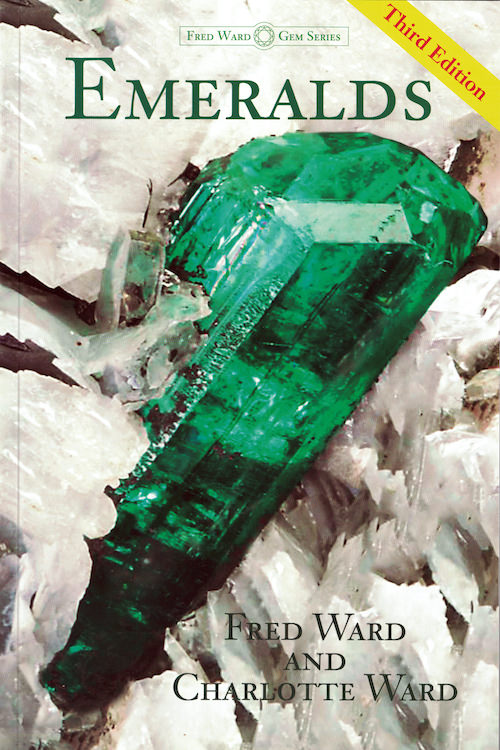
Reviews
Tons of great information and beautiful photos.
This is a clear, concise, easy to read guide to emeralds. Very well photographed. A great primer for those unfamiliar with the complex emeralds world, and a good reference for those who are more knowledgeable. Excellent for jewelers, designers to use with customers and gem lovers. Highly recommended.
This is a lovely, thorough, captivating look at the entire scope of emeralds. In true National Geographic form, Mr. Ward takes us through the history, the science, the lore of these amazingly varied gems. As a gemologist, he walks us through the mining and chemistry of beryl. Fred and Charlotte Ward are collectors and world-travelers obviously, because there are exquisite examples from every corner of the globe. From the priceless to the contemporary, he has photographed the major pieces to convey the range of color, clarity, and beauty. And with his obvious journalism background, the pace is detailed enough to challenge while enticing enough to feel drama. You feel the grit of discovery to the awe of true natural beauty.
For many reasons you will reference these books in conversation, over dinner, with friends...I have read them cover to cover and they are the standard for understanding and appreciating the jewels we covet.
I love this book. It is a small book packed with a lot of punch. Very heavy into the Brazilian mines and life. Lot's of beautiful color photographs.
For a short history on Emerald mining, this book seems to have it all.
This book is a fairly short book on Emeralds. Ward gives the reader a great introduction to the world of emeralds without losing the reader in a bunch of scientific jargon. Though the book is very short for its price,it is full of great color pictures and information. The photography in this book alone makes it a must have for emerald lovers. The only complaint that I have about the photograph is that many of the pictures are taken zoomed in so the reader has a tough time determining the actual size of the subjects. Ward touches on the ancient history of these beautiful gems and explores modern day sources of the world's emeralds. Ward also discusses treatments of emeralds before sale, care of emerald jewlery, and there is a particularly interesting section on the making of synthetic emeralds. I would recomend this book to anyone with an interest in emeralds, but I would not recomend it to those looking for a particularly scientific book or a buyer's guide. This little book is packed with information and photographs that won't let you down.
